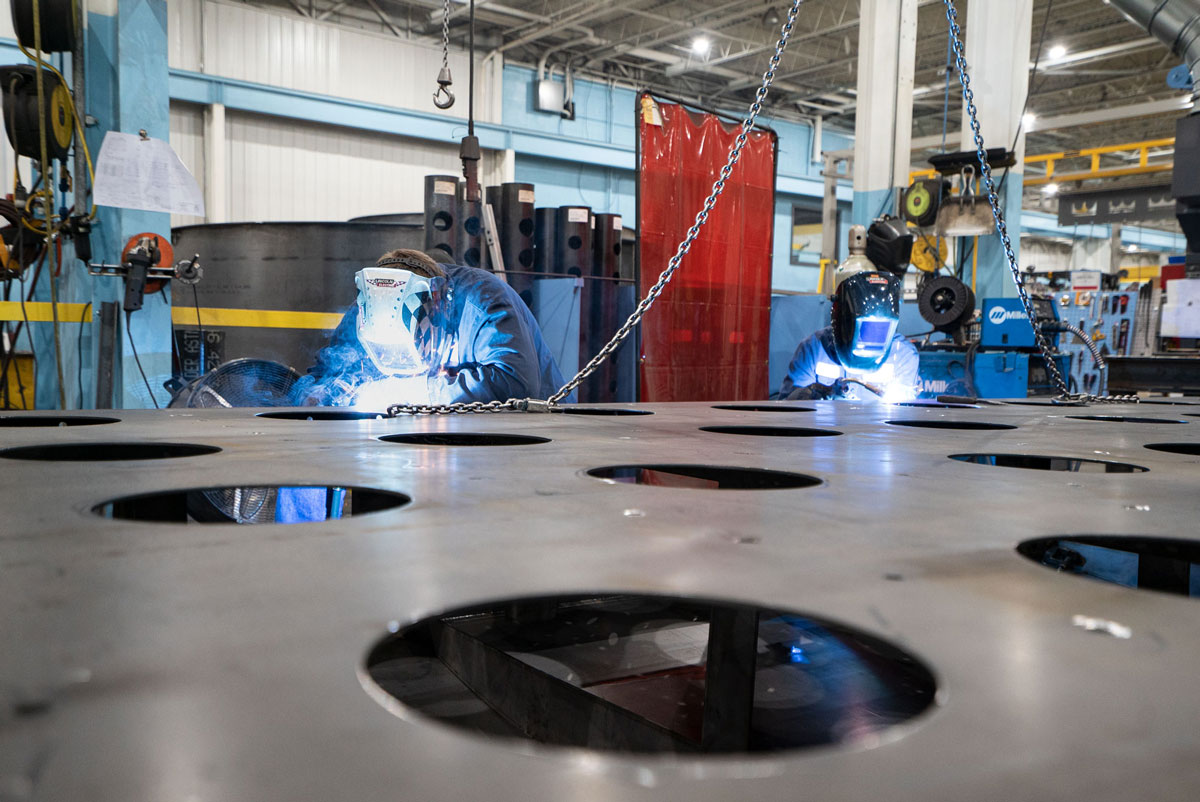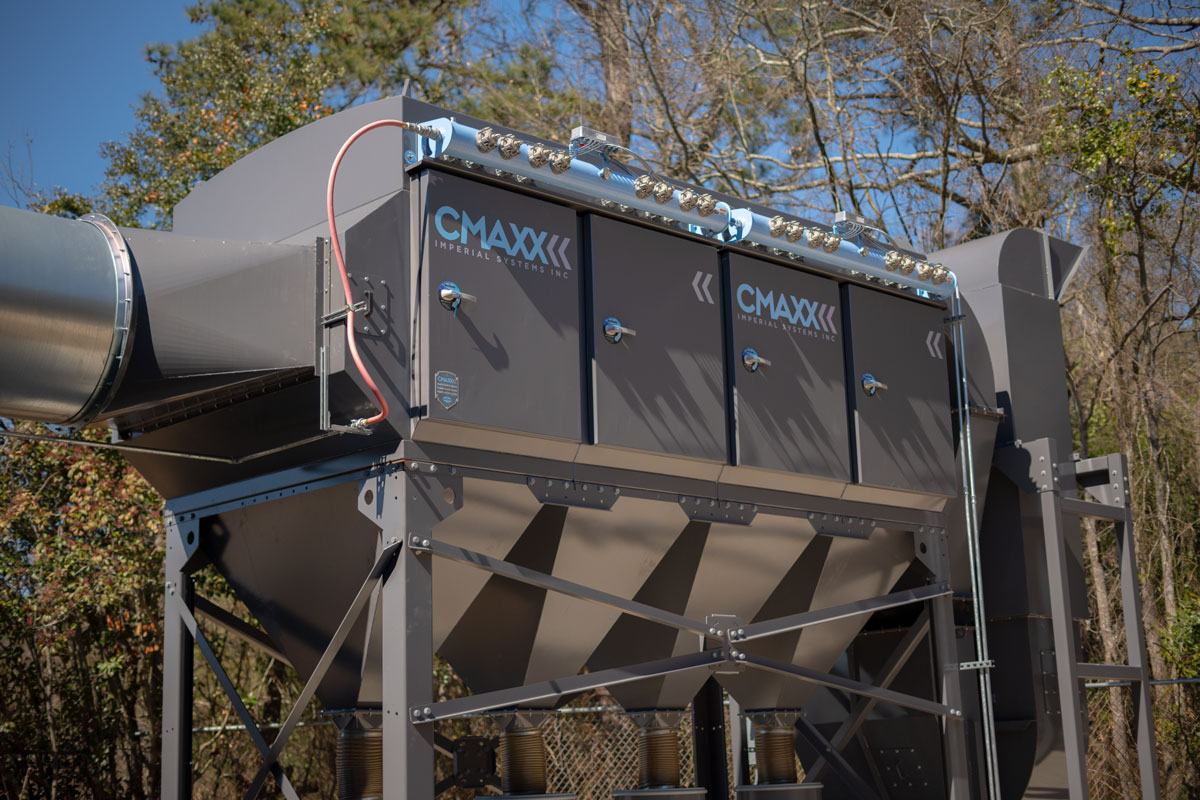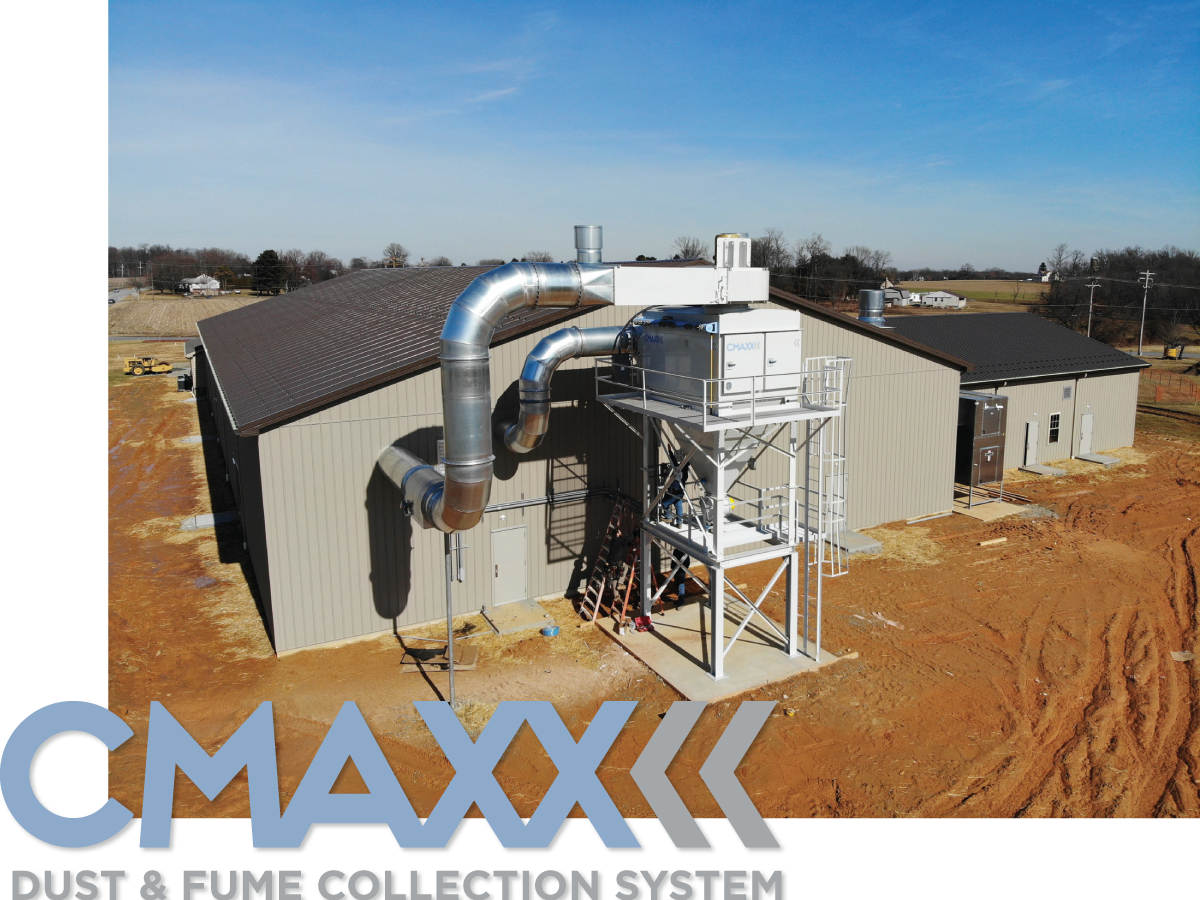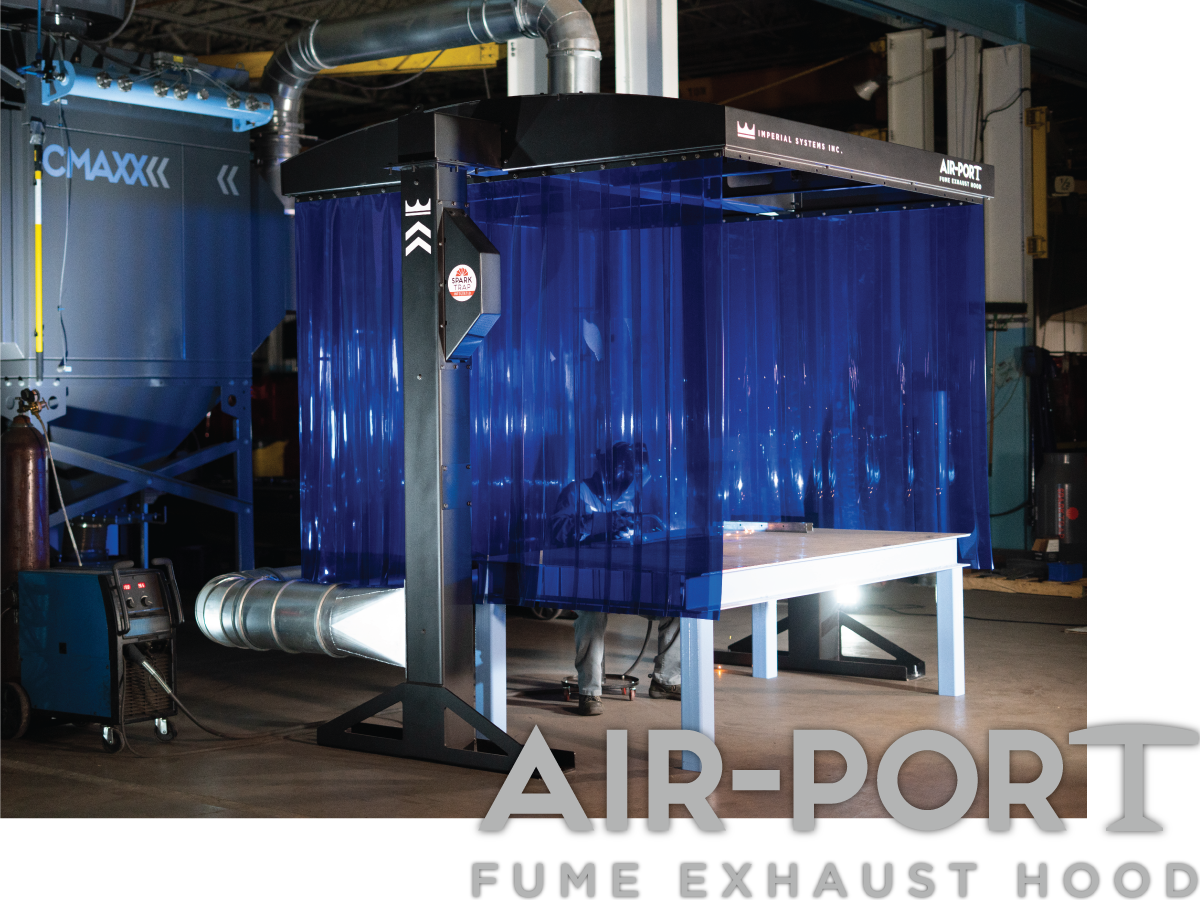Welding Fume Extraction
Welding is a vital process in metal fabrication, but it also creates hazardous fumes that can post a severe threat to your health. These fumes contain a mixture of gases, particles, and metal oxides that can cause respiratory problems, metal fume fever, and even cancer. Implementing an effective welding fume extraction system is essential to safeguard the health of welders and those in the vicinity.
Different types of welding that require welding fume extraction
Gas metal arc welding (GMAW/MIG)
Continuously fed, consumable wire electrode melts to form the weld and requires external shielding gas to protect the molten metal. It is a versatile process for welding thin to thick sections of steel, aluminum, and stainless steel. MIG welding is common in automotive and general fabrication applications.
Flux-cored arc welding (FCAW)
Similar to MIG welding, but the consumable electrode contains a core filled with flux. This flux provides additional shielding and allows for deeper weld penetration. It is often used in outdoor applications due to its tolerance to wind, in thicker sections where extra material deposition is needed, or in situations where external shielding gas might be impractical.
Gas tungsten arc welding (GTAW/TIG)
TIG welding uses a non-consumable tungsten electrode to create the intense heat for melting the base metal. A separate filler rod can be added to create the weld and it requires external shielding gas. TIG welding is known for producing high quality, clean welds. It is ideal for applications demanding precise control and minimal splatter.
Submerged arc welding (SAW)
Heat is generated by an arc formed beneath a blanket of continuously fed granular flux. The flux protects the molten metal and removes impurities. The high-deposition rate makes it suitable for long seams and thick plate applications, like shipbuilding and heavy equipment manufacturing.
Electroslag welding (ESW)
Heat is generated by the electrical resistance of molten slag formed between a consumable electrode and the workpiece. Deep weld penetration is achieved. There are limited applications where this type of welding is the best option. Applications with thick material where deep penetration is required, like boiler and pressure vessel fabrication. ESW is a complex process requiring specialized equipment and training.
Oxyacetylene welding
This uses a high-temperature flame produced by the combustion of acetylene and oxygen to melt the metal. Oxyacetylene welding is often used in sheet metal work, repair and maintenance, and artistic metalworking.
Resistance welding
Heat is generated by the electrical resistance offered by the contact area between the workpieces. Resistance welding is most widely used in automotive manufacturing and assembly lines due to its speed and automation capabilities.

The Importance of Welding Fume Extraction
Effective welding fume extraction is mandatory to ensure the safety of personnel in the welding environment.
- Reduced Health Risks: A proper fume extraction system captures and removes fumes at the source, significantly reducing the risk of inhalation and associated health complications.
- Improved Air Quality: Fume extraction systems help maintain a clean and healthy work environment by filtering out harmful contaminants.
- Enhanced Visibility: By eliminating smoke and fumes, welders can have a clearer view of the welding zone, leading to miproved accuracy and quality of welds.
Weld Fume Extraction Options
Fixed Fume Extraction
These systems are permanently fixed at the facility. These are used in larger facilities. This type of system may require welders to work under a snorkel arm or hood.
Portable Fume Extractors
These systems are usually small but versatile, and can be a good solution for smaller workshops, or shops that only weld occasionally. They are typically equipped with flexible snorkel arms that must be repositioned to follow the work.
Ambient Fume Extraction
These systems tend to be best for larger production facilities with multiple weld cells. The facility ceiling acts as a hood, and airflow draws the fume up and into the fume extraction system.

The Problem with Portable
When it comes to tackling large welding projects, portable fume extractors can become a obstacle due to limitations in reach and maneuverability. Their fume arms typically have a short reach, making it difficult to consistently capture fumes throughout the entire welding zone on a large workpiece. The arm must be consistently repositioned by the welder in order to effectively capture the fume, and when it’s not the welder is susceptible to health risks associated with weld fume. For large-scale welding projects, a fixed or ambient fume extraction system with a broader collection area and more permanent positioning offers an efficient and safer solution.

Things to Consider When Choosing a Weld Fume Extraction System
- The first thing to consider when in the market for a weld fume extraction system is the characteristics of your welding operation. This may include the types of welding done, materials used, and the production volume at your facility.
- Another consideration is the size and layout of your facility. This includes the arrangement of welding stations, equipment, and ventilation. Ceiling height and any obstacles like cranes and support structures should be considered.
- Work with professionals to ensure that the system you choose will adhere to health and safety regulations. There are several regulatory bodies with codes you may need follow, including but not limited to OSHA, EPA, and NFPA.
Shadow Compact Fume Extractor
The Shadow Compact Fume Extractor is designed for laser cutting, robotic welding, and other light dust loading applications. The Shadow offers excellent air quality control at a lower fully installed price point. It is a cost-efficient fume control solution for indoor installation on noncombustible dust.
DeltaMAXX Prime Cartridge Filter
The DeltaMAXX Prime cartridge filter is designed for maximum performance in the CMAXX and Shadow systems. With 400 square feet of nanofiber filter media, it offers the best air to cloth ratio available. Unique design features improve safety during filter changes and handling.
Chemical Isolation Systems
A rapid discharge of a chemical explosion suppressant prevents the flame from continuing to other ares of your dust collection system. This is best used when explosion venting is not an option.
Spark Trap
A Spark Trap creates a tortuous path that slows sparks and embers down and causes them to loose heat. This prevents sparks from entering the dust collector and creating a fire. Spark Traps are recommended by NFPA as part of a complete fire prevention system.
Rhino Drum
The Rhino Drum Explosion Tested Drum Kit is a cost efficient alternative to a rotary airlock, and can withstand an explosion up to 7 psi. With a tool free design and no moving parts, the Rhino Drum can be quickly emptied for easier maintenance.
Abort Gate
An Abort Gate is typically situated on the return air side of the dust collector and diverts clean air, sparks, and fumes. An Abort Gate can also be trigged by a spark detector or broken bag detector, preventing harmful material like fire and smoke from entering the building.
Explosion Venting
Explosion venting allows a flame front and pressure wave to escape from within a collector and dissipate into the atmosphere. Explosion vents include a burst indicator that alert in the event of a deflagration.
Explosion Isolation Valve
This system is installed on the ductwork and detects any sparks that are present in the duct. Once detected, sparks are extinguished downstream before they can continue on and cause further damage to equipment or reenter the facility.
Airlock
Our Airlocks maintain a consistent seal at the outlet of the dust collector while allowing material to continuously pass through. This seal also allows discarded material to be properly discharged, and prevents it from returning to the dust collector.
Welding fumes may be combustible. Dust testing can establish what types of fire and explosion features are needed to meet OSHA and NFPA standards. Further, metal dust produced by welding may be very combustible. Please see our white paper on combustible dust for more details.
For welding and other metal fume applications, DeltaMAXX cartridge filters provide the necessary efficiency for small particle capture. These filters can capture particles as small as 0.3 microns. In addition, the system may include HEPA after-filters if the fumes contain especially hazardous materials like hexavalent chromium. These secondary filters are an extra barrier against the escape of toxic materials.
Please see the case studies below. These are examples of how Imperial Systems has helped other companies solve their welding fume extraction problems.


